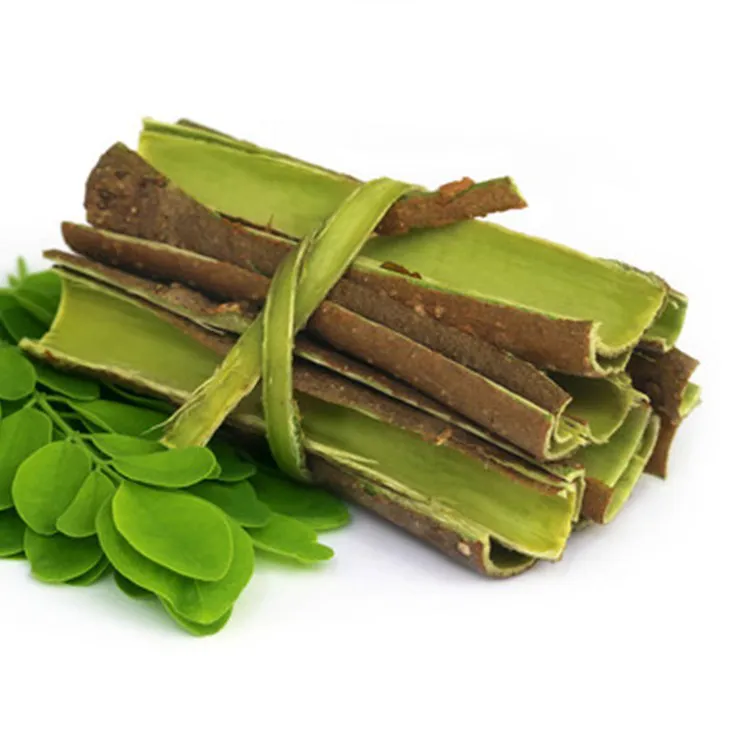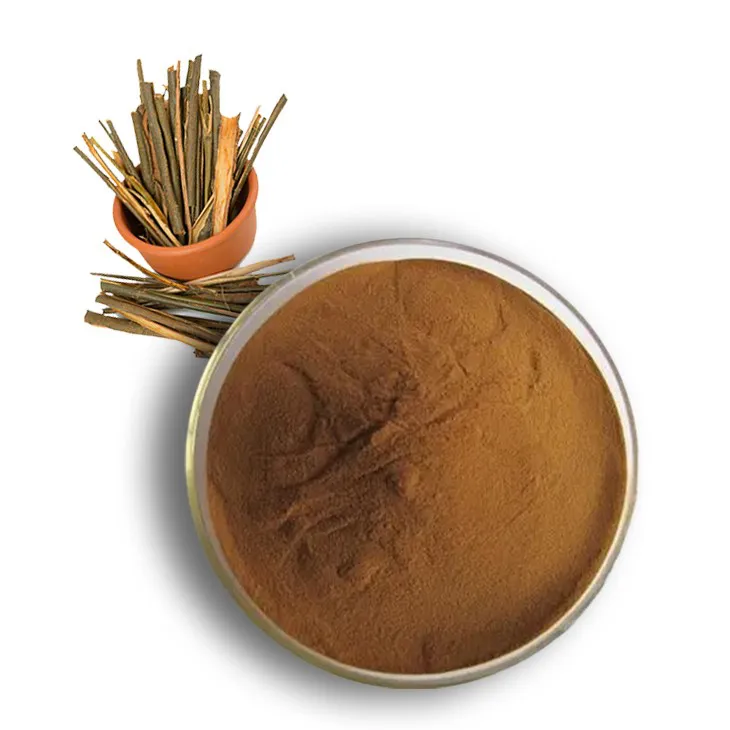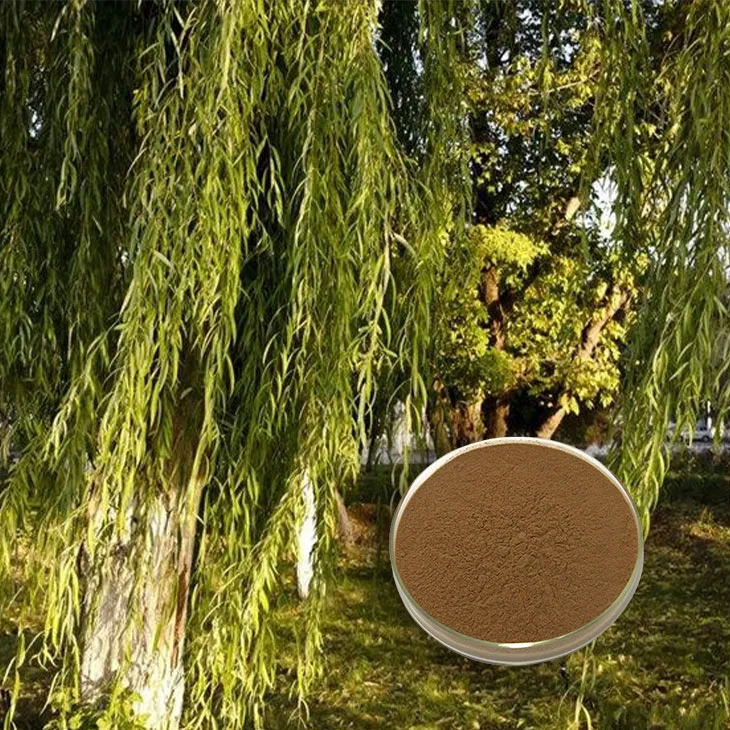- 0086-571-85302990
- sales@greenskybio.com
The best sources of natural white willow bark extract.
2024-11-28

Introduction
White Willow Bark Extract has been recognized for its various health - promoting properties for centuries. It contains salicin, which is the precursor to aspirin and has anti - inflammatory, analgesic, and fever - reducing effects. However, not all sources of White Willow Bark Extract are equal. The quality of the extract can vary significantly depending on the source, cultivation methods, and extraction processes. This article aims to explore the best natural sources of White Willow Bark Extract.

Botanical Characteristics of White Willow Trees
1. Species Varieties
- There are different species of white willow trees, and among them, Salix alba is the most commonly used for extract production. Salix alba has certain characteristics that make it a favorable source. For example, it has a relatively high content of salicin in its bark compared to some other willow species. The bark of Salix alba is thick and fibrous, which allows for a more efficient extraction process.
- Another species, Salix fragilis, also contains salicin, but its bark structure is somewhat different. It may require different extraction techniques to obtain a high - quality extract. Understanding these species - specific differences is crucial for identifying the best natural source.
- White willow trees thrive in moist soil conditions. Areas near rivers, lakes, or wetlands are ideal habitats for them. When grown in such optimal environments, the trees are generally healthier, and their bark contains a more consistent and higher concentration of active compounds. For instance, in regions with a temperate climate and regular water supply, white willow trees can grow vigorously, resulting in better - quality bark for extraction.
- The amount of sunlight also plays a role. Adequate sunlight exposure promotes photosynthesis, which in turn affects the biosynthesis of salicin and other secondary metabolites in the bark. However, excessive sunlight can also cause stress to the trees, so a balance is necessary. Trees growing in areas with filtered sunlight, such as on the banks of a forested river, may produce bark with a more favorable chemical composition for extraction.

Organic Farming of White Willow Trees
1. Soil Quality and Fertilization
- Organic farming of white willow trees emphasizes the use of natural fertilizers such as compost and manure. These fertilizers improve the soil structure, increase soil fertility, and provide essential nutrients to the trees. In contrast to synthetic fertilizers, organic fertilizers release nutrients slowly, which is beneficial for the long - term growth and health of white willow trees. For example, compost contains a rich variety of microorganisms that help break down organic matter in the soil, making nutrients more accessible to the trees' roots.
- Maintaining good soil quality is crucial for the production of high - quality white willow bark extract. Healthy soil promotes the absorption of water and nutrients by the trees, which is directly related to the synthesis of salicin and other bioactive compounds in the bark. Soil that is rich in organic matter also helps the trees resist diseases and pests, reducing the need for chemical pesticides.
- In organic farming, natural methods are used to control pests and diseases. For white willow trees, this can include the use of beneficial insects such as ladybugs, which prey on aphids that may attack the trees. Another approach is the use of plant - based extracts with pesticidal properties, like neem oil. These natural pest control methods are more environmentally friendly compared to chemical pesticides.
- Preventing diseases in white willow trees is also important. This can be achieved through proper tree spacing to ensure good air circulation, as well as regular pruning to remove diseased branches. By maintaining the health of the trees through organic pest and disease management, the quality of the bark and, consequently, the extract can be enhanced.

Wild - crafted Harvesting
1. Sustainability Considerations
- When it comes to wild - crafted harvesting of white willow bark, sustainability is of utmost importance. Harvesting should be done in a way that does not damage the natural populations of white willow trees. This requires careful monitoring of the tree populations and setting appropriate harvesting limits. For example, only a certain percentage of the bark from each tree should be harvested, leaving enough bark for the tree to continue growing and functioning properly.
- Another aspect of sustainability is the protection of the surrounding ecosystem. White willow trees are part of a complex ecological community, and their removal or over - harvesting can have a negative impact on other organisms. For instance, some bird species may rely on white willow trees for nesting, and small mammals may use the fallen branches for shelter. Therefore, sustainable wild - crafted harvesting should take into account the overall ecological balance.
- Wild - crafted white willow bark needs to meet certain quality standards. Since it is harvested from the wild, there is a greater variability in its quality compared to bark from cultivated trees. However, proper harvesting techniques can help ensure a high - quality product. For example, the bark should be harvested at the right time of the year when the salicin content is at its peak. This usually occurs during the spring or early summer.
- Harvesters should also be trained to identify healthy trees and avoid those that are diseased or damaged. The bark should be carefully removed without causing excessive harm to the tree. After harvesting, the bark should be properly dried and stored to prevent spoilage and maintain its potency.

Chemical Composition Differences in Extracts from Different Sources
1. Salicin Content Variation
- The salicin content can vary significantly depending on the source of the white willow bark. As mentioned earlier, different species of white willow trees may have different baseline levels of salicin. For example, Salix alba may have a salicin content ranging from 1 - 3% in its bark, while other species may have lower or higher amounts. Additionally, the growth conditions and cultivation methods can also affect the salicin content. Trees grown in nutrient - rich soil with optimal sunlight and water conditions are likely to have a higher salicin content compared to those grown in less favorable environments.
- Even within the same species, there can be differences in salicin content between individual trees. This can be due to genetic variation, age of the tree, or local environmental factors. Therefore, when sourcing white willow bark extract, it is important to consider these factors to ensure a consistent and high - salicin - containing product.
- Besides salicin, white willow bark contains other bioactive compounds such as flavonoids and phenolic acids. The composition of these additional compounds can vary depending on the source of the bark. For example, the type and amount of flavonoids may be different in bark from wild - crafted trees compared to those from organically cultivated trees. These flavonoids can have antioxidant and anti - inflammatory properties, and their presence can enhance the overall effectiveness of the white willow bark extract.
- The phenolic acids in white willow bark also play important roles in its biological activities. Different sources of bark may have different profiles of phenolic acids, which can affect the extract's efficacy in areas such as pain relief and anti - inflammation. Understanding the variation in these other bioactive compounds is essential for evaluating the quality of white willow bark extract from different sources.
Conclusion
Finding the best natural source of white willow bark extract requires a comprehensive understanding of various factors. The botanical characteristics of white willow trees, including species varieties and growth conditions, play a fundamental role in determining the quality of the bark and the extract. Organic farming methods ensure the purity and potency of the extract through proper soil management and pest control. Wild - crafted harvesting, when done sustainably, can also provide high - quality bark, but requires careful attention to quality assurance. Moreover, the chemical composition differences in extracts from different sources, especially in terms of salicin content and other bioactive compounds, are crucial considerations. By taking all these aspects into account, consumers and manufacturers can make more informed decisions when sourcing white willow bark extract, ultimately ensuring the availability of a high - quality, effective product.
FAQ:
What are the botanical characteristics of white willow trees related to high - quality extract production?
The white willow tree (Salix alba) has certain botanical characteristics that are relevant to high - quality extract production. Its bark contains salicin, which is the main active compound in white willow bark extract. The age and growth conditions of the tree can influence the concentration of salicin. Older trees may have a higher concentration. Also, the tree's natural environment, such as soil quality and sunlight exposure, can affect the overall chemical composition of the bark. Healthy trees growing in nutrient - rich soil are more likely to produce bark with a higher quality extract.
How does organic farming contribute to the purity and potency of white willow bark extract?
Organic farming plays a significant role in ensuring the purity and potency of white willow bark extract. In organic farming, no synthetic pesticides or fertilizers are used. This reduces the risk of chemical residues in the bark. Organic farming also promotes a more natural growth environment for the white willow trees. The trees are able to develop in a way that is closer to their natural state, which may lead to a more stable and potent chemical composition in the bark. For example, the natural soil microbiota in an organic farming system can interact with the roots of the tree and enhance the biosynthesis of beneficial compounds like salicin.
What are the advantages of wild - crafted harvesting for white willow bark extract?
Wild - crafted harvesting has some advantages for white willow bark extract. Firstly, wild - grown white willow trees are often in their natural habitats, which can result in unique chemical profiles due to the diverse environmental factors. The extract from these trees may contain a wider range of secondary metabolites in addition to salicin. Secondly, it can be a more sustainable option if done properly. When managed carefully, wild - crafted harvesting can ensure the long - term survival of white willow populations while still providing a source of high - quality bark for extract production. However, it also requires strict regulations to prevent over - harvesting.
How do chemical composition differences in extracts from different sources affect their effectiveness?
The chemical composition differences in extracts from different sources can have a significant impact on their effectiveness. For instance, the concentration of salicin can vary. A higher concentration of salicin in an extract may lead to stronger anti - inflammatory and pain - relieving effects, as salicin is converted to salicylic acid in the body, which has these properties. Additionally, extracts from different sources may contain different ratios of other compounds. These secondary metabolites can interact with salicin or have their own biological activities. If an extract has a more balanced and diverse chemical composition, it may be more effective in treating various conditions compared to an extract with a simpler composition.
How can consumers identify the best natural source of white willow bark extract?
Consumers can identify the best natural source of white willow bark extract in several ways. Firstly, they can look for products that are sourced from organic farms or sustainably wild - crafted areas. Certifications can be a good indicator. For example, organic certifications ensure that the extract is produced without harmful chemicals. Secondly, research on the brand or manufacturer is important. Reputable companies are more likely to source from high - quality sources and follow strict quality control procedures. Thirdly, consumers can look at the product label for information about the source of the extract, such as the region where the white willow trees are grown. If possible, they can also seek information about the extraction process, as a proper extraction method can preserve the purity and potency of the extract.
Related literature
- The Botany and Chemistry of White Willow Bark: A Comprehensive Review"
- "Organic Farming and the Quality of Botanical Extracts: The Case of White Willow Bark"
- "Wild - Crafted Botanicals: Sustainable Harvesting and the Purity of White Willow Bark Extract"
- "Chemical Composition Variations in White Willow Bark Extracts from Different Sources and Their Therapeutic Implications"
- ▶ Hesperidin
- ▶ Citrus Bioflavonoids
- ▶ Plant Extract
- ▶ lycopene
- ▶ Diosmin
- ▶ Grape seed extract
- ▶ Sea buckthorn Juice Powder
- ▶ Fruit Juice Powder
- ▶ Hops Extract
- ▶ Artichoke Extract
- ▶ Mushroom extract
- ▶ Astaxanthin
- ▶ Green Tea Extract
- ▶ Curcumin
- ▶ Horse Chestnut Extract
- ▶ Other Product
- ▶ Boswellia Serrata Extract
- ▶ Resveratrol
- ▶ Marigold Extract
- ▶ Grape Leaf Extract
- ▶ New Product
- ▶ Aminolevulinic acid
- ▶ Cranberry Extract
- ▶ Red Yeast Rice
- ▶ Red Wine Extract
-
Sea buckthorn oil
2024-11-28
-
Genistein
2024-11-28
-
Konjac Powder
2024-11-28
-
Beetroot Powder
2024-11-28
-
Moringa powder
2024-11-28
-
Beta Carotene
2024-11-28
-
Kidney Bean Extract
2024-11-28
-
Wheat Germ Extract
2024-11-28
-
Curcuma Longa Extract
2024-11-28
-
Hops Extract
2024-11-28





















